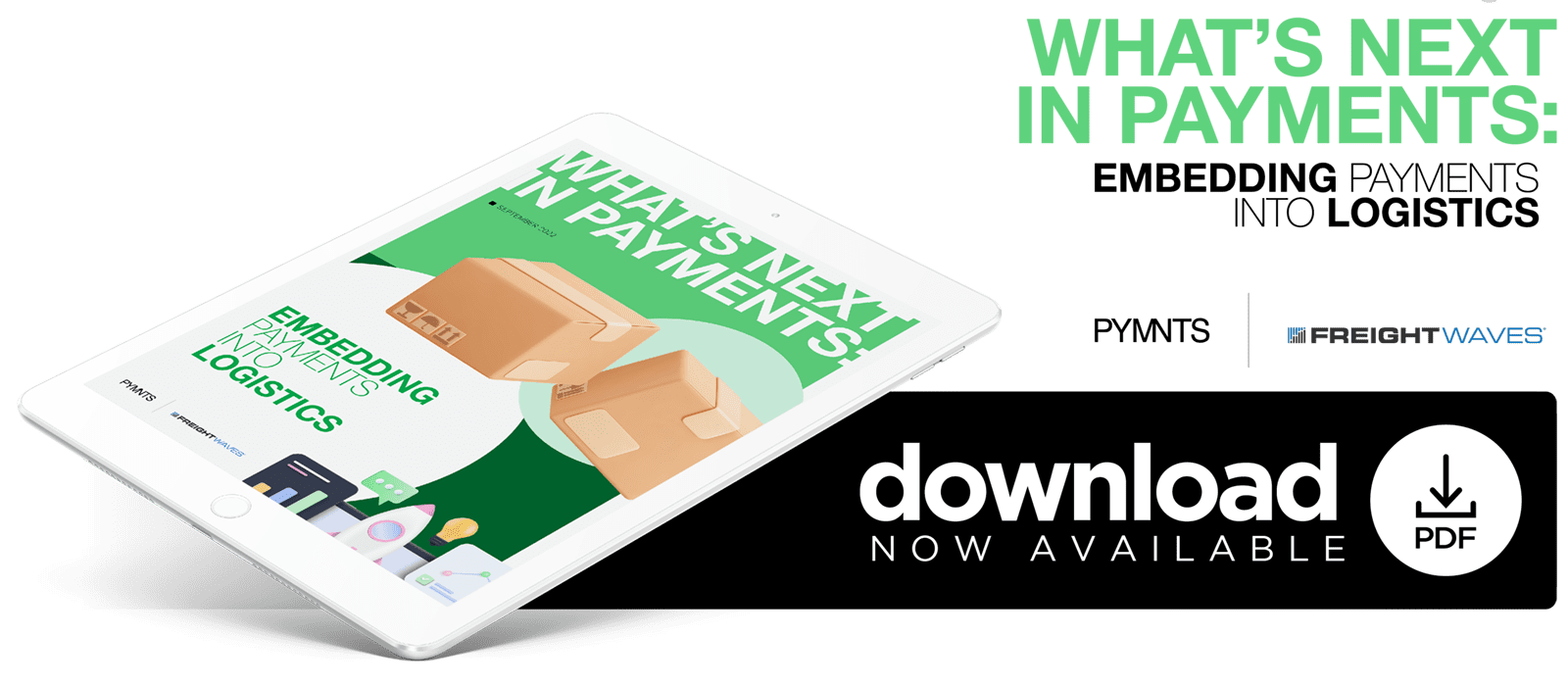6 Real-Life Ways Embedded Payments Are Streamlining Logistics

The pandemic changed everything, but it remains true that success happens when two minds come together and create innovation.
Clearly, eCommerce firms are looking to expand their businesses across borders in a turbulent world.
 Geopolitical tensions, including the ongoing war in Ukraine, create supply chain disruptions. Ongoing supply chain constraints because of demand exceeding supply are stubbornly persistent even as business hedges its bets over concerns of pullbacks or even recession. A strong dollar influences trade economics.
Geopolitical tensions, including the ongoing war in Ukraine, create supply chain disruptions. Ongoing supply chain constraints because of demand exceeding supply are stubbornly persistent even as business hedges its bets over concerns of pullbacks or even recession. A strong dollar influences trade economics.
Shipping costs, meanwhile, have traditionally been taken for granted as an expense the buyer needed to bear. In consumer markets, that presumption has fallen by the wayside. In the wake of the pandemic, the shift to delivery from in-store shopping proved persistent and free shipping has become commonplace.
Amazon innovated with its Prime membership, including free shipping as a benefit. Businesses, especially small ones, have adopted consumer behaviors, particularly when it comes to low-ticket, lightweight, off-the-shelf products such as office supplies. And B2B sellers have started taking cues from the consumer market.
Carriers and shippers are motivated by relationships and innovation. They seek to do whatever they can to sustain the relationships and then innovate by having payment systems talk to each other. The goal is to bridge the divide by having the shipper, carrier and the broker all speaking the same financial language, thus making the transportation experience seamless.
They are looking for ways to build efficiencies and intelligence back into our supply chain. This is a reset period because of what they have been through and are still going through.
There are still in many ways a lot of things out of sync in supply chains, and transportation gets the brunt of it because the delivery piece is the final part. Companies have also had to rethink what was once, for good or bad, a staple of the B2B world: the trade show. Convention centers may be filling up again, but hybrid has become the new normal for both brands and retailers. That has resulted in a lot of the ad hoc coping mechanisms for COVID-related commerce restraints becoming permanent fixtures in wholesale and retail fashion. Only 11% of brands plan exclusively in-person participation at trade shows.
Through it all, companies have been going about the hard work of streamlining payments and logistics, using digital tools to fight opaque processes — and mountains of paperwork.
PYMNTS’ Karen Webster caught up with six leaders at the Supply Chain Meets FinTech Virtual Conference, a PYMNTS/FreightWaves collaboration, who shared their perspectives as we start to emerge. While they work in different verticals and in different capacities, these leaders agreed: It’s more critical than ever to assess the trends at the intersection of supply chain and FinTech. This eBook explores what they’ve learned from theirs.
